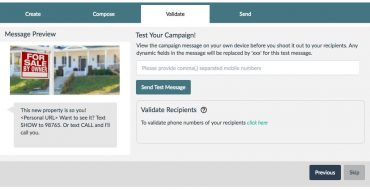
All it takes is 2 easy steps
If you're a winner, we will send you $100 Amazon gift card at Dreamforce!


Even though SMS Messages for business has been in play for years, it’s surrounded by myths and misconceptions. Some of the objections we hear include:
This simply isn’t true. Companies using messaging find that a solid majority of their prospects and customers want to communicate with them via text. Additionally, texting is a permissions-based form of marketing. So those who opt-in to this channel do want to hear from you. Research by Marketing Strategies International found that 66% of customers preferred communicating with brands by text over either phone or email (this rises to 68% for millennials).
This same research asked consumers if they’d feel differently about a brand when communicating via SMS messaging. Their response:
Wrong again. People of all ages find texting and sending SMS messages intuitive and easy. Baby boomers are the fastest segment adopting and using technology today. Parents and grandparents are adopting and learning how to use technology from their children and grandchildren. Recent KPMG research[1] shows just how much influence this transfer of knowledge is having across generations.
Recent research[2] finds that 80% of business professionals text and 15% of them say that more than 50% of their texts are for business purposes. Companies across industries are finding useful applications for text messaging both internally and externally. This includes, SaaS companies, telecoms, logistics and transportation, construction, manufacturing, recruiting, real estate, professional services, financial and banking organizations, non-profits, and more.
Many of the use cases you may think of for text messaging may be transactional in nature. This includes appointment scheduling and reminders, delivery notifications, password verification, and other one-off, one-way transactions. However, Ovum’s Enterprise Messaging Survey 2017[3] found that 23% of respondents say their use of two-way messaging has increased in the past year.
Customers want to have conversations with the brands they favor. SMS advanced messaging platforms can orchestrate those conversations with automated workflows, similar to a chat bot. The workflows can also alert a human to step into the conversation. Think about dynamic nurture flows vs. the static ones you use today with marketing automation for email. You can also prompt prospects to text you a keyword to trigger an informational exchange they initiate. Inbound marketing at its finest.
The possibilities are only limited by your imagination and how compelling you can make your 160-character SMS message, or the quality of your mobile content used in an MMS.
According to research firm Ovum, the big three carriers in the US have offered free voice calling and SMS with almost any phone bundle since 2010. Many other countries have fixed-fee, unlimited texting plans. T-Mobile has such plans in more than 140 countries, for example.
SMS messages are here to stay. Yes, messaging applications have massive growth in users but there are a few factors predicting a bright future for conversational text messaging in business. A report by the MEF[4] finds that 35% of consumers trust SMS the most of all messaging platforms, likely due to its neutrality.
Application-to-Person (A2P) messaging, which describes the use of SMS by enterprises to send texts to customers, employees and partners is ubiquitous and can be used by anyone with a mobile phone, regardless of handset, operator, OS, or country. Ovum forecasts that SMS traffic will grow to 1.28 trillion messages per annum by 2019.
Isn’t it time for you to dispel the myths holding you back from the messaging channel your prospects and customers prefer?
[2] A New Era for Mobile Unified Communications
https://www.broadsoft.com/a_new_era_for_mobile_uc_a_dbrn_associates_whitepaper
[3] Mapping the Future of Enterprise Messaging: SMS, RCS, and Chat Bots
https://ovum.informa.com/resources/product-content/mapping-the-future-of-enterprise-messaging-sms-rcs-and-chat-bots
[4] MEF Mobile Messaging Report 2016
https://mobileecosystemforum.com/mobile-messaging-report-2016/

Feb 13, 2017
Stay updated on business text messaging
Text MAGIC for Demo to
USA: 36343
AUS: (61)409564682
UK & ROW: +44 7860017509
Email: care@sms-magic.com